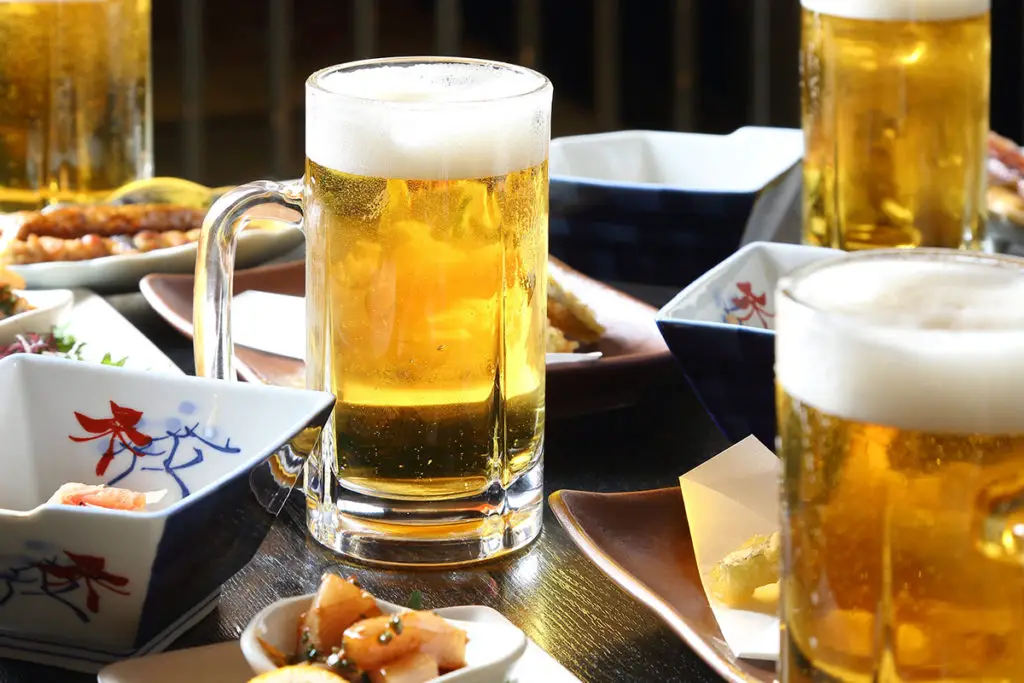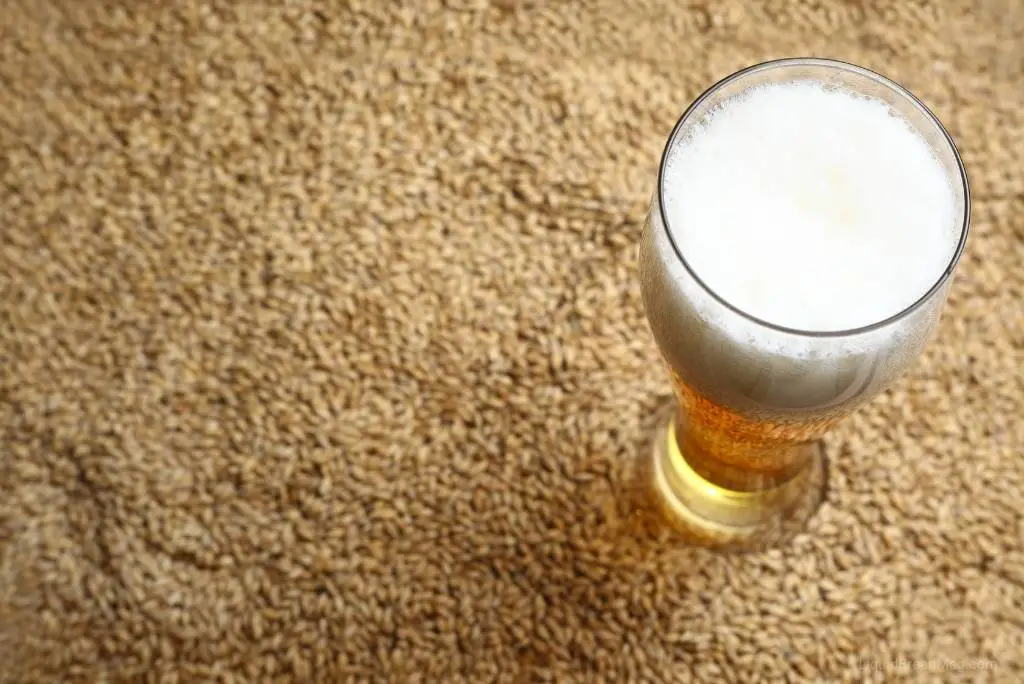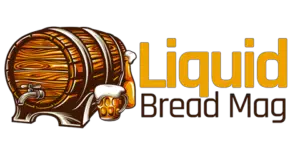Malt liquor is the “bad boy” of the fermented beverage world. Its low cost and rebellious reputation have made it a favorite of some disadvantaged segments of American society. But what exactly is “malt liquor,” and how is it different from beer?
Malt liquor is essentially a high-proof beer that uses fewer hops and has a sweeter, less bitter flavor. To a casual drinker, it will probably just taste like beer, but a regular beer drinker will notice the difference.
This article will explore the differences between malt liquor and other beers, its history, and its reputation. I will finish with a first try review of malt liquor.
What Is the Difference Between Malt Liquor and Beer?
In technical terms, malt liquor is a bottom-fermented beverage made of malted barley with an alcohol content above 6%, while traditional beer can be top or bottom-fermented. Malt liquor is only bottom-fermented. Traditional beer typically has an alcohol content below 5.5%.

BEER DROP: Boxes of beer from Award-winning microbreweries → Join The Club
Malt liquor is typically a pale yellow to light orange. Some brands have a slightly solvent scent due to the presence of some fermentation byproducts not found in traditional beer.
How Malt Liquor Is Made
In beer terminology, malt liquor is a bottom-fermented strong lager or pale ale where inexpensive ingredients like corn or sugar are added to the wort to improve fermentation. The “wort” is the mixture of water and grain in which fermentation takes place.
Ingredients added to the malt to improve fermentation are called “adjuncts” in the beer industry.
While both traditional beer and malt liquor are made to be as profitable as possible, America’s state religion being capitalism, malt liquor is made as cheaply as possible. Traditional beers typically use rice or wheat as adjuncts.
Malt liquors use much cheaper adjuncts like corn, lower-quality rice, or straight refined sugar.
Traditional beer and malt liquor are typically flavored with hops, but malt liquor brewers use fewer hops. This gives the finished product a less bitter taste.
Malt liquor is sold in a variety of sizes, but the 40 oz (1133.98 g) bottle is the most iconic. This size bottle contains roughly the same amount of alcohol as five mixed cocktails.
Legal Definition of Malt Liquor
Alcohol regulations in America are disorganized and scattershot.
There is no national legal definition for “malt liquor,” and most states have their own definitions. Some states’ definitions are so inclusive that traditional beer, flavored drinks like hard lemonade, and non-alcoholic beer are all considered “malt liquor” or “malt beverages.”
In America, “beer” is defined as a beverage produced with water, malted barley, and other ingredients, with an alcohol content equal to or above 5%.
International Terminology For Malt Liquor
Malt liquor is not exclusive to America:
- In the UK, it is called “super-strength lager.”
- The French call it “bières fortes,” which translates to “strong beer.”
- Italians have “Birra doppio malto”, or “double malt beer”.
- Germans call it “double bock,” loosely translated to “double strong beer.”
History of Malt Liquor
The first mention of “malt liquor” is in an English legal document dating back to 1690. It simply referenced any drink made with malted barley.
The first mention of the beverage in the Americas was a patent issued by the Canadian government to one George Riley in 1842 for “an improved method of brewing ale, beer, porter, and other malt liquors.”
The method Riley invented was to conduct the fermentation in a sealed and refrigerated container.
The first brand of malt liquor produced on American soil was Clix, produced by the Grand Valley Brewing Company of Minneapolis, Minnesota, in 1942. The brand was named after the brewing owner’s nickname, “Click” Koerber.
Malt liquor has historically struggled for market share in the United States and is most popular in impoverished communities with large minority populations. But with the American middle class in freefall, it will probably become more popular in the near future.
The Reputation of Malt Liquor
Malt liquor has a speckled reputation in American society. Due to its low price and high alcohol content, it is popular with poor people and minorities. And as I discovered when buying a bottle, many racist preconceptions are attached to the drink.
Malt liquor historically struggled to gain market share in America due to beer’s wide popularity and advertising.
Attempts to market it as a higher class “champagne-style” drink to the white middle class failed in the 1950s. The only market segment where malt liquor was consistently popular was in African-American neighborhoods.
In 1984, advertising executives working for Colt 45 hit their masterstroke and signed Billy Dee Williams as their spokesman.
Williams, who would later play District Attorney Harvey Dent in the 1989 “Batman” film, was widely seen as the “coolest man in America.” Following the success of this advertising campaign, most brands of malt liquor began aiming their advertising squarely at the African American community.
By 1986, the Colt 45 malt liquor brand was outselling several of the leading beer brands, including Schlitz. And most of those sales were from impoverished African Americans.
In the mid-1990s, several rappers and hip-hop “artists” prominently featured malt liquor in their “songs” and “music” videos. This cemented malt liquor’s place in African-American culture and set the stage for its surprisingly racist reputation.
The high alcohol content and low price of malt liquor made it a favorite of middle-class white teenagers. In 1991, US Surgeon General Antonia Novello even cited malt liquor advertisers for targeting teenagers.
The 40 oz (1133.98 g) bottle, in particular, has earned infamy due to the “Edward Fortyhands” drinking game. Players, usually suburban white teenagers, have 40-ounce bottles of malt liquor taped to their hands. To win, you have to completly drink both your bottles.
The marketing of malt liquor to underage and underprivileged customers has made it the subject of several business ethics case studies.
It has often been used as a scapegoat, singled out as the cause of African American and Hispanic American communities’ problems. That is opposed to systemic racism and a parasitic capitalist economy.
Review of Malt Liquor
I’ve been curious about malt liquor for years and am frankly disappointed. The brand of malt liquor I tried will remain nameless but was described as the “entry-level malt liquor.”

I am a beer drinker. The number of beer brands I’ve sampled is large. However, the best thing I can say about malt liquor is that it was not as bad as some beers I’ve tried. And it was incredibly cheap: $3.50 for a 40 oz (1133.98 g) bottle.
I didn’t like it and did not drink enough to feel the effects of the alcohol.
On a scale of 1 to 10, where 1 is the ubiquitous bitters that every Central European country has as their “national spirit,” and 10 is green chartreuse (the best alcohol I’ve ever tried), I give malt liquor a 4 out of 10.
It wasn’t that good, and I would not try again, but at least it didn’t give me a migraine.
Conclusion
Despite minor differences in the brewing process, malt liquor is really nothing more than exceptionally strong, cheap beer.
